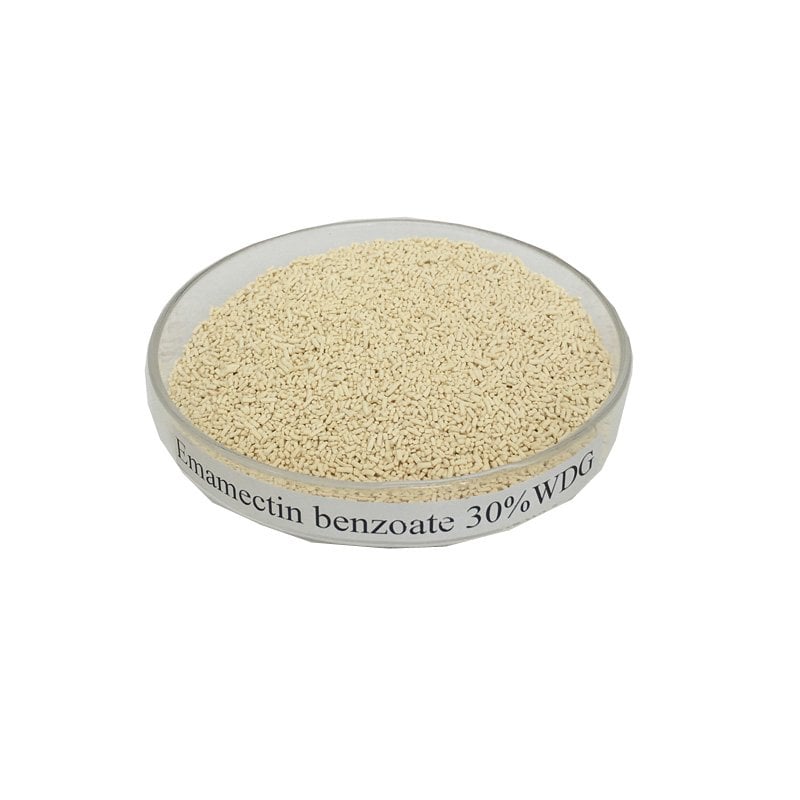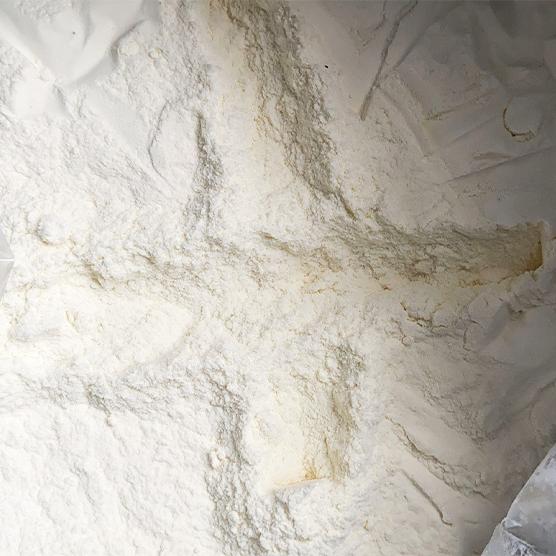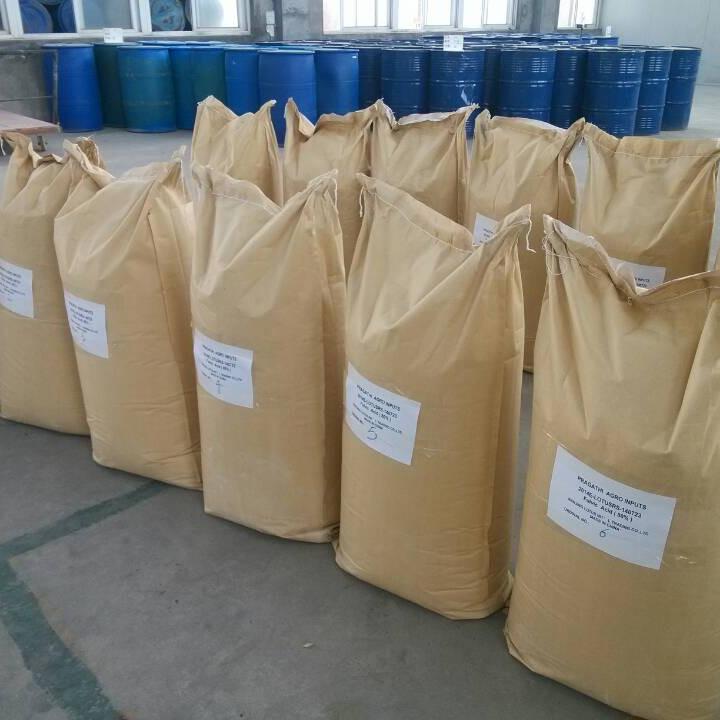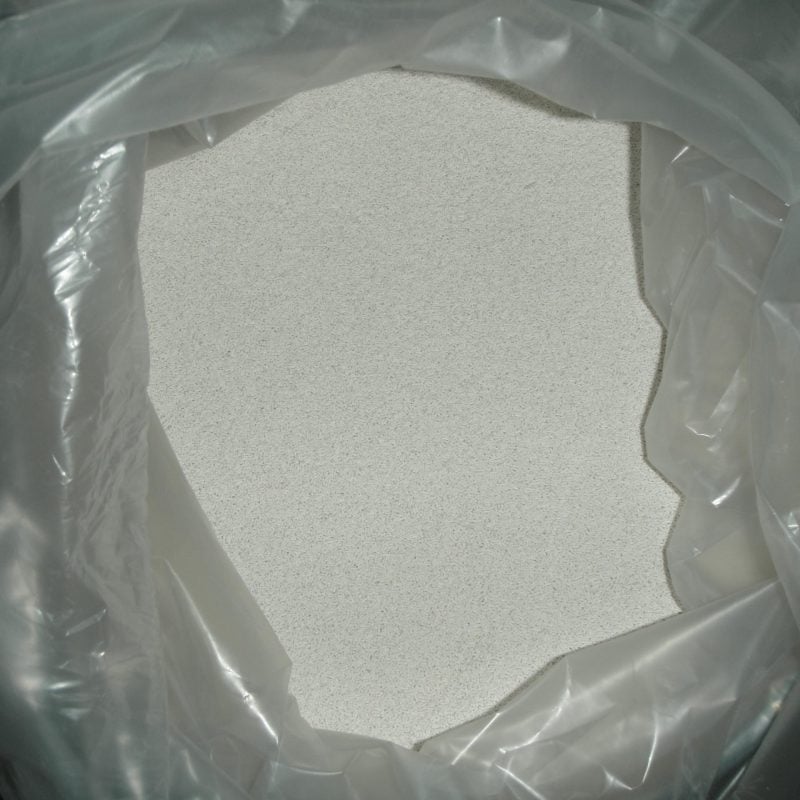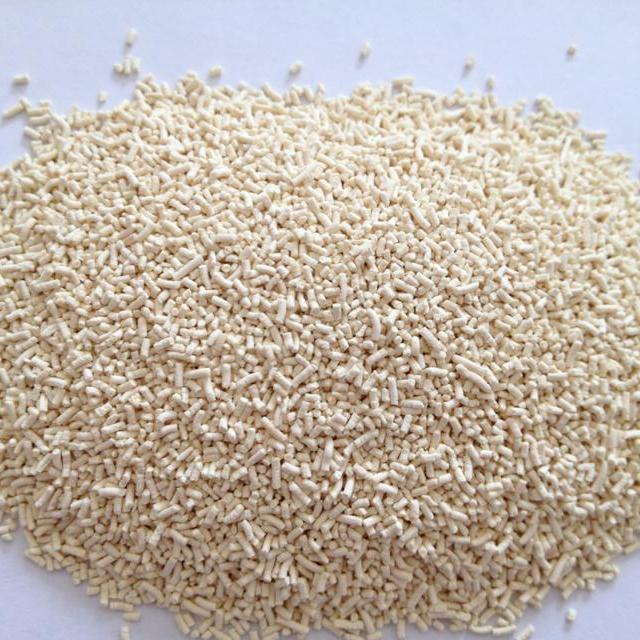Emamectin Benzoate 5% SG: use, mode of action and effectiveness
Emamectin Benzoate 5% SG is a powerful and widely used insecticide in the agricultural sector. As part of the agrochemical family, it provides effective pest control, particularly for caterpillars, leaf miners, and stem borers that affect a variety of crops. This article will delve into the detailed aspects of emamectin benzoate 5% SG, including its formulation, mode of action, specific uses, and its role as an essential tool in integrated pest management (IPM).
What is Emamectin Benzoate 5% SG?
Emamectin benzoate is a semi-synthetic avermectin derivative, developed from naturally occurring compounds produced by the bacterium Streptomyces avermitilis. A key feature of emamectin benzoate is its potency and selective action, which allows it to target specific insect pests while having minimal impact on beneficial insects, making it a popular choice in modern pest control.
The 5% SG formulation refers to a product concentration of 5% emamectin benzoate by weight in a soluble granule (SG) form. This formulation is designed for easy mixing with water, allowing farmers and pest control operators to apply it through foliar sprays to target pests on a wide range of crops.
Mode of Action of Emamectin Benzoate 5% SG
The mode of action of emamectin benzoate is unique and highly effective in targeting insect pests. It works by disrupting the nervous system of insects. Specifically, it binds to GABA (gamma-aminobutyric acid) receptors in the insect’s nervous system. GABA is a neurotransmitter responsible for inhibitory signaling, which helps regulate nerve impulses.
When emamectin benzoate interferes with the GABA receptor, it causes the insect’s nervous system to become overstimulated. This overstimulation leads to paralysis and ultimately death. Since it is a systemic insecticide, it is absorbed by plants and taken up by feeding insects, ensuring that the pest is effectively controlled once it consumes the treated plant material.
This mode of action makes emamectin benzoate highly effective against a range of pests, particularly Lepidopteran pests (moths and butterflies) and certain Thysanopteran pests (thrips), that can otherwise be difficult to manage with other insecticides.
Uses of Emamectin Benzoate 5% SG Insecticide
Emamectin benzoate 5% SG is primarily used to control insect pests that attack agricultural crops, including fruits, vegetables, grains, and ornamental plants. Here’s a breakdown of the most common applications:
1. Control of Lepidopteran Pests (Caterpillars and Moths)
One of the primary uses of emamectin benzoate 5% SG is in the control of caterpillar pests. These pests are particularly damaging to crops as they feed on the leaves, stems, and fruit, reducing both yield and quality. Common pests controlled by emamectin benzoate include:
- Cotton bollworm (Helicoverpa armigera)
- Cabbage looper (Trichoplusia ni)
- Tomato hornworm (Five-spotted hawk moth larvae)
- Fall armyworm (Spodoptera frugiperda)
Emamectin benzoate is effective in targeting these pests during their larval stage when they are actively feeding on plants.
2. Leaf Miners
Leaf miners, both in vegetables and fruit crops, are another target for emamectin benzoate. The larvae of leaf miners burrow into the leaves, creating tunnels that damage plant tissues, affecting photosynthesis and reducing plant vigor.
- Vegetable leaf miners (Liriomyza spp.) and fruit tree leaf miners can be effectively controlled with emamectin benzoate, especially in crops like tomatoes, peppers, and berries.
3. Stem Borers
Emamectin benzoate 5% SG is also highly effective against stem borers, which affect crops such as corn, rice, and sugarcane. These pests bore into plant stems, affecting plant stability and growth.
- For instance, rice stem borer (Scirpophaga excerptalis) and sugarcane borers (Scirpophaga excerptalis) can be managed with this insecticide to protect crops.
4. Other Agricultural Uses
Emamectin benzoate is also used for controlling a variety of other pests in fruits, vegetables, and ornamentals, including:
- Fruit tree pests: Control of pests like the codling moth in apple orchards.
- Leaf rollers: Commonly found in citrus and grape vines.
- Thrips: In crops like peppers and tomatoes.
Its broad spectrum of action makes it an essential insecticide for integrated pest management in these crops.
Dosage of Emamectin Benzoate 5% SG
| Recommended Crops | Recommended Pests | Dosage Per Acre | Waiting period (days) | |
| Formulation (g) | Dilution in water (Litres) | |||
| Grapes | Thrips | 88 | 200-400 | 5 |
| Red gram | Pod borer | 88 | 200-300 | 14 |
| Cotton | Bollworms | 76-88 | 200 | 10 |
| Chickpea | Pod borer | 88 | 200 | 14 |
| Tea | Tea looper | 80 | 200 | 1 |
| Cabbage | Diamond back moth | 60-80 | 200 | 3 |
| Brinjal | Fruit & Shoot Borer | 80 | 200 | 3 |
| Okra | Fruit & Shoot Borer | 54-68 | 200 | 5 |
| Chillies | Fruit borer, Thrips & Mites | 80 | 200 | 3 |
Emamectin Benzoate 5% SG: Agrochemical Formulation and Application
The 5% SG formulation is designed for ease of use and efficient application. SG stands for Soluble Granule, a form that allows the insecticide to be easily mixed with water and applied as a spray. This formulation ensures that emamectin benzoate is delivered in a controlled and concentrated manner, maximizing its effectiveness.
- Application Rate: The typical application rate of emamectin benzoate 5% SG varies depending on the crop and pest pressure. It is often applied at rates of 0.75 to 1.5 oz per acre. The product is typically sprayed during the early stages of pest infestation, especially when pests are in their larval stage.
- Mode of Application: Foliar spraying is the most common method of application. This allows the insecticide to be absorbed by plant tissues and ingested by pests as they feed on the plants.
- Safety Considerations: While emamectin benzoate is generally safe for beneficial insects like bees when applied correctly, care should be taken to avoid spraying during periods of high pollinator activity. Additionally, as with any pesticide, protective gear should be worn to minimize exposure during application.
Environmental Impact and Resistance Management
Environmental Persistence: Emamectin benzoate is considered relatively safe for the environment when used according to label instructions. It is not persistent in the soil and degrades relatively quickly, reducing the risk of long-term environmental impact.
Resistance Management: Over-reliance on a single insecticide can lead to resistance in pest populations. To mitigate the risk of resistance, it is advised to rotate emamectin benzoate with other insecticides that have different modes of action. It is also beneficial to incorporate other pest control methods, such as biological control, as part of an integrated pest management (IPM) approach.
Conclusion
Emamectin Benzoate 5% SG is a highly effective and selective insecticide that provides superior control over a range of insect pests, particularly caterpillars, leaf miners, and stem borers. With its systemic action, it offers long-lasting protection for crops, while its low environmental impact makes it an attractive option for farmers practicing sustainable agriculture.
By understanding the mode of action, appropriate application techniques, and resistance management practices, users can maximize the benefits of this powerful agrochemical. It plays a crucial role in modern agricultural pest control, helping growers maintain healthy crops and high yields while minimizing the use of more toxic chemicals. Always follow the manufacturer’s instructions for proper use to ensure both effectiveness and safety for users, consumers, and the environment.
Emamectin Benzoate 5% SG is a powerful and widely used insecticide in the agricultural sector. As part of the agrochemical family, it provides effective pest control, particularly for caterpillars, leaf miners, and stem borers that affect a variety of crops. This article will delve into the detailed aspects of emamectin benzoate 5% SG, including its formulation, mode of action, specific uses, and its role as an essential tool in integrated pest management (IPM).
What is Emamectin Benzoate 5% SG?
Emamectin benzoate is a semi-synthetic avermectin derivative, developed from naturally occurring compounds produced by the bacterium Streptomyces avermitilis. A key feature of emamectin benzoate is its potency and selective action, which allows it to target specific insect pests while having minimal impact on beneficial insects, making it a popular choice in modern pest control.
The 5% SG formulation refers to a product concentration of 5% emamectin benzoate by weight in a soluble granule (SG) form. This formulation is designed for easy mixing with water, allowing farmers and pest control operators to apply it through foliar sprays to target pests on a wide range of crops.
Mode of Action of Emamectin Benzoate 5% SG
The mode of action of emamectin benzoate is unique and highly effective in targeting insect pests. It works by disrupting the nervous system of insects. Specifically, it binds to GABA (gamma-aminobutyric acid) receptors in the insect’s nervous system. GABA is a neurotransmitter responsible for inhibitory signaling, which helps regulate nerve impulses.
When emamectin benzoate interferes with the GABA receptor, it causes the insect’s nervous system to become overstimulated. This overstimulation leads to paralysis and ultimately death. Since it is a systemic insecticide, it is absorbed by plants and taken up by feeding insects, ensuring that the pest is effectively controlled once it consumes the treated plant material.
This mode of action makes emamectin benzoate highly effective against a range of pests, particularly Lepidopteran pests (moths and butterflies) and certain Thysanopteran pests (thrips), that can otherwise be difficult to manage with other insecticides.
Uses of Emamectin Benzoate 5% SG Insecticide
Emamectin benzoate 5% SG is primarily used to control insect pests that attack agricultural crops, including fruits, vegetables, grains, and ornamental plants. Here’s a breakdown of the most common applications:
1. Control of Lepidopteran Pests (Caterpillars and Moths)
One of the primary uses of emamectin benzoate 5% SG is in the control of caterpillar pests. These pests are particularly damaging to crops as they feed on the leaves, stems, and fruit, reducing both yield and quality. Common pests controlled by emamectin benzoate include:
- Cotton bollworm (Helicoverpa armigera)
- Cabbage looper (Trichoplusia ni)
- Tomato hornworm (Five-spotted hawk moth larvae)
- Fall armyworm (Spodoptera frugiperda)
Emamectin benzoate is effective in targeting these pests during their larval stage when they are actively feeding on plants.
2. Leaf Miners
Leaf miners, both in vegetables and fruit crops, are another target for emamectin benzoate. The larvae of leaf miners burrow into the leaves, creating tunnels that damage plant tissues, affecting photosynthesis and reducing plant vigor.
- Vegetable leaf miners (Liriomyza spp.) and fruit tree leaf miners can be effectively controlled with emamectin benzoate, especially in crops like tomatoes, peppers, and berries.
3. Stem Borers
Emamectin benzoate 5% SG is also highly effective against stem borers, which affect crops such as corn, rice, and sugarcane. These pests bore into plant stems, affecting plant stability and growth.
- For instance, rice stem borer (Scirpophaga excerptalis) and sugarcane borers (Scirpophaga excerptalis) can be managed with this insecticide to protect crops.
4. Other Agricultural Uses
Emamectin benzoate is also used for controlling a variety of other pests in fruits, vegetables, and ornamentals, including:
- Fruit tree pests: Control of pests like the codling moth in apple orchards.
- Leaf rollers: Commonly found in citrus and grape vines.
- Thrips: In crops like peppers and tomatoes.
Its broad spectrum of action makes it an essential insecticide for integrated pest management in these crops.
Dosage of Emamectin Benzoate 5% SG
| Recommended Crops | Recommended Pests | Dosage Per Acre | Waiting period (days) | |
| Formulation (g) | Dilution in water (Litres) | |||
| Grapes | Thrips | 88 | 200-400 | 5 |
| Red gram | Pod borer | 88 | 200-300 | 14 |
| Cotton | Bollworms | 76-88 | 200 | 10 |
| Chickpea | Pod borer | 88 | 200 | 14 |
| Tea | Tea looper | 80 | 200 | 1 |
| Cabbage | Diamond back moth | 60-80 | 200 | 3 |
| Brinjal | Fruit & Shoot Borer | 80 | 200 | 3 |
| Okra | Fruit & Shoot Borer | 54-68 | 200 | 5 |
| Chillies | Fruit borer, Thrips & Mites | 80 | 200 | 3 |
Emamectin Benzoate 5% SG: Agrochemical Formulation and Application
The 5% SG formulation is designed for ease of use and efficient application. SG stands for Soluble Granule, a form that allows the insecticide to be easily mixed with water and applied as a spray. This formulation ensures that emamectin benzoate is delivered in a controlled and concentrated manner, maximizing its effectiveness.
- Application Rate: The typical application rate of emamectin benzoate 5% SG varies depending on the crop and pest pressure. It is often applied at rates of 0.75 to 1.5 oz per acre. The product is typically sprayed during the early stages of pest infestation, especially when pests are in their larval stage.
- Mode of Application: Foliar spraying is the most common method of application. This allows the insecticide to be absorbed by plant tissues and ingested by pests as they feed on the plants.
- Safety Considerations: While emamectin benzoate is generally safe for beneficial insects like bees when applied correctly, care should be taken to avoid spraying during periods of high pollinator activity. Additionally, as with any pesticide, protective gear should be worn to minimize exposure during application.
Environmental Impact and Resistance Management
Environmental Persistence: Emamectin benzoate is considered relatively safe for the environment when used according to label instructions. It is not persistent in the soil and degrades relatively quickly, reducing the risk of long-term environmental impact.
Resistance Management: Over-reliance on a single insecticide can lead to resistance in pest populations. To mitigate the risk of resistance, it is advised to rotate emamectin benzoate with other insecticides that have different modes of action. It is also beneficial to incorporate other pest control methods, such as biological control, as part of an integrated pest management (IPM) approach.
Conclusion
Emamectin Benzoate 5% SG is a highly effective and selective insecticide that provides superior control over a range of insect pests, particularly caterpillars, leaf miners, and stem borers. With its systemic action, it offers long-lasting protection for crops, while its low environmental impact makes it an attractive option for farmers practicing sustainable agriculture.
By understanding the mode of action, appropriate application techniques, and resistance management practices, users can maximize the benefits of this powerful agrochemical. It plays a crucial role in modern agricultural pest control, helping growers maintain healthy crops and high yields while minimizing the use of more toxic chemicals. Always follow the manufacturer’s instructions for proper use to ensure both effectiveness and safety for users, consumers, and the environment.

